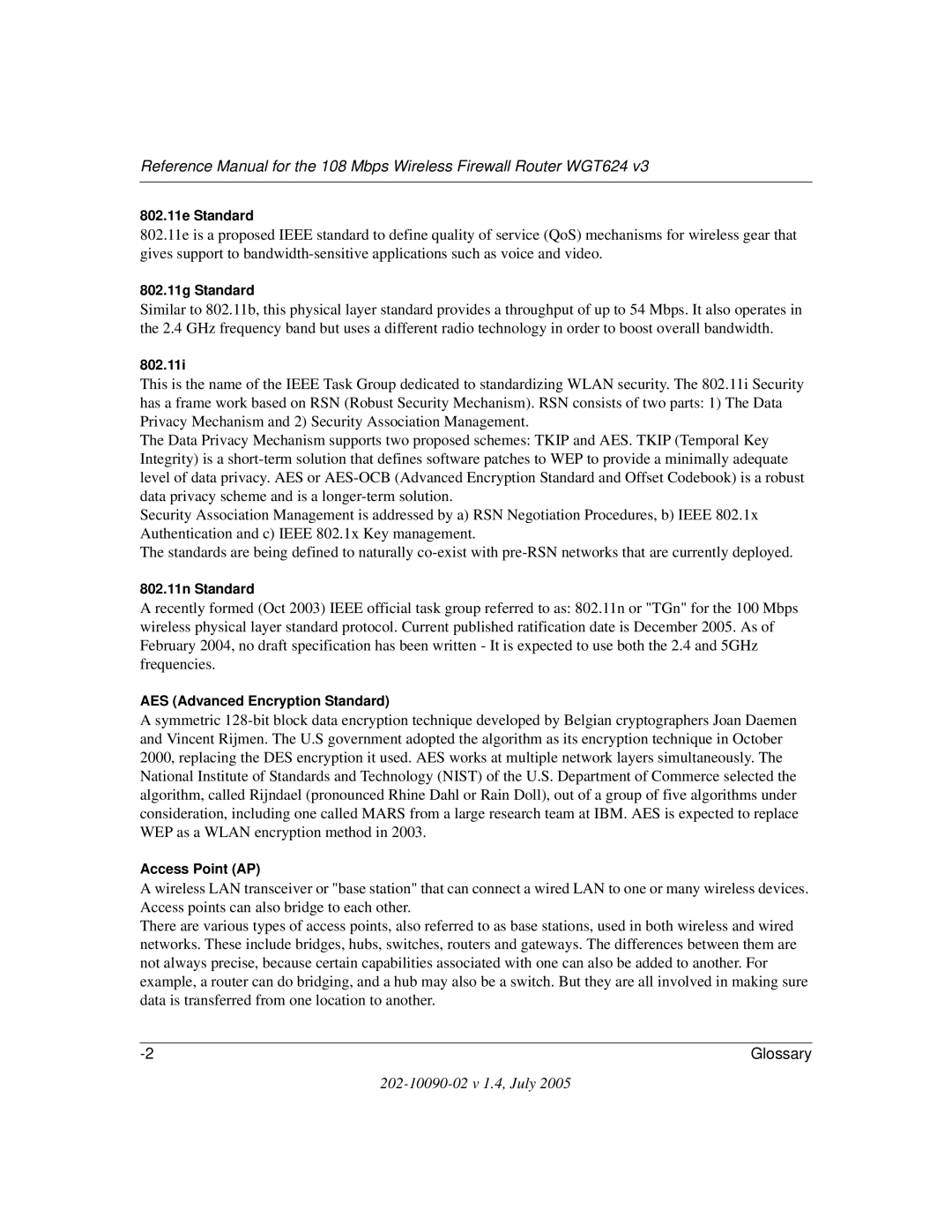Reference Manual for the 108 Mbps Wireless Firewall Router WGT624 v3
802.11e Standard
802.11e is a proposed IEEE standard to define quality of service (QoS) mechanisms for wireless gear that gives support to
802.11g Standard
Similar to 802.11b, this physical layer standard provides a throughput of up to 54 Mbps. It also operates in the 2.4 GHz frequency band but uses a different radio technology in order to boost overall bandwidth.
802.11i
This is the name of the IEEE Task Group dedicated to standardizing WLAN security. The 802.11i Security has a frame work based on RSN (Robust Security Mechanism). RSN consists of two parts: 1) The Data Privacy Mechanism and 2) Security Association Management.
The Data Privacy Mechanism supports two proposed schemes: TKIP and AES. TKIP (Temporal Key Integrity) is a
Security Association Management is addressed by a) RSN Negotiation Procedures, b) IEEE 802.1x Authentication and c) IEEE 802.1x Key management.
The standards are being defined to naturally
802.11n Standard
A recently formed (Oct 2003) IEEE official task group referred to as: 802.11n or "TGn" for the 100 Mbps wireless physical layer standard protocol. Current published ratification date is December 2005. As of February 2004, no draft specification has been written - It is expected to use both the 2.4 and 5GHz frequencies.
AES (Advanced Encryption Standard)
A symmetric
Access Point (AP)
A wireless LAN transceiver or "base station" that can connect a wired LAN to one or many wireless devices. Access points can also bridge to each other.
There are various types of access points, also referred to as base stations, used in both wireless and wired networks. These include bridges, hubs, switches, routers and gateways. The differences between them are not always precise, because certain capabilities associated with one can also be added to another. For example, a router can do bridging, and a hub may also be a switch. But they are all involved in making sure data is transferred from one location to another.
Glossary |
